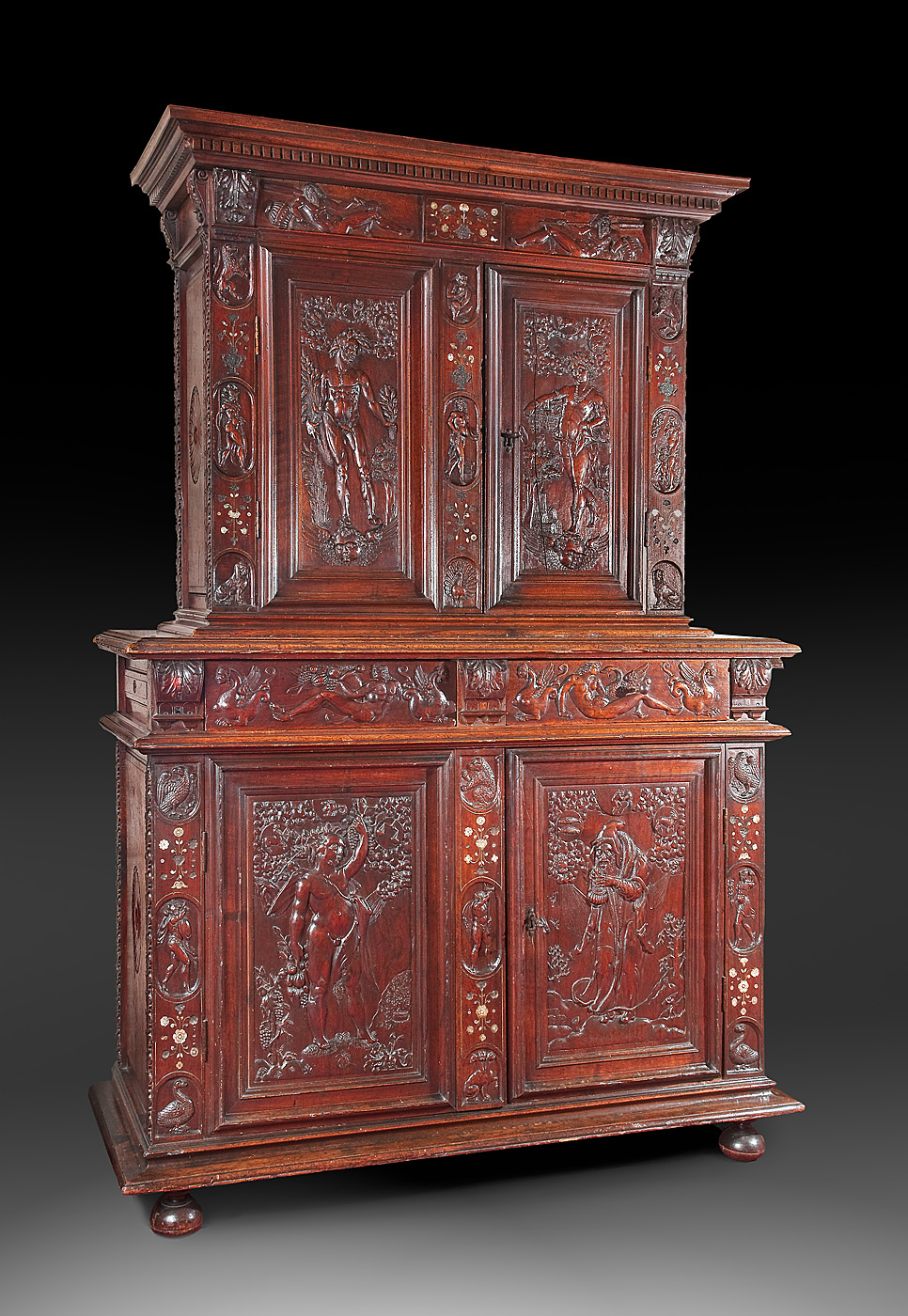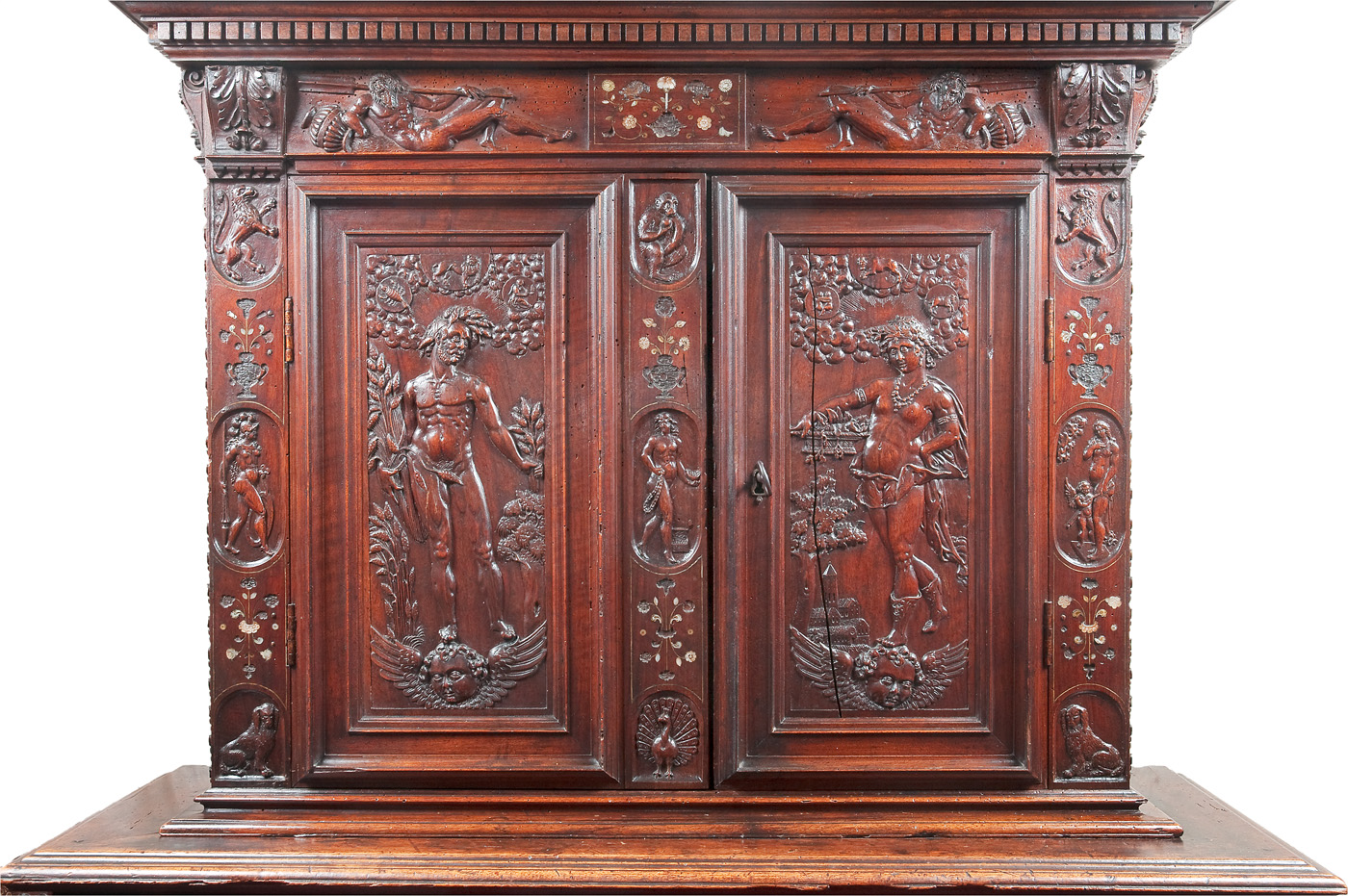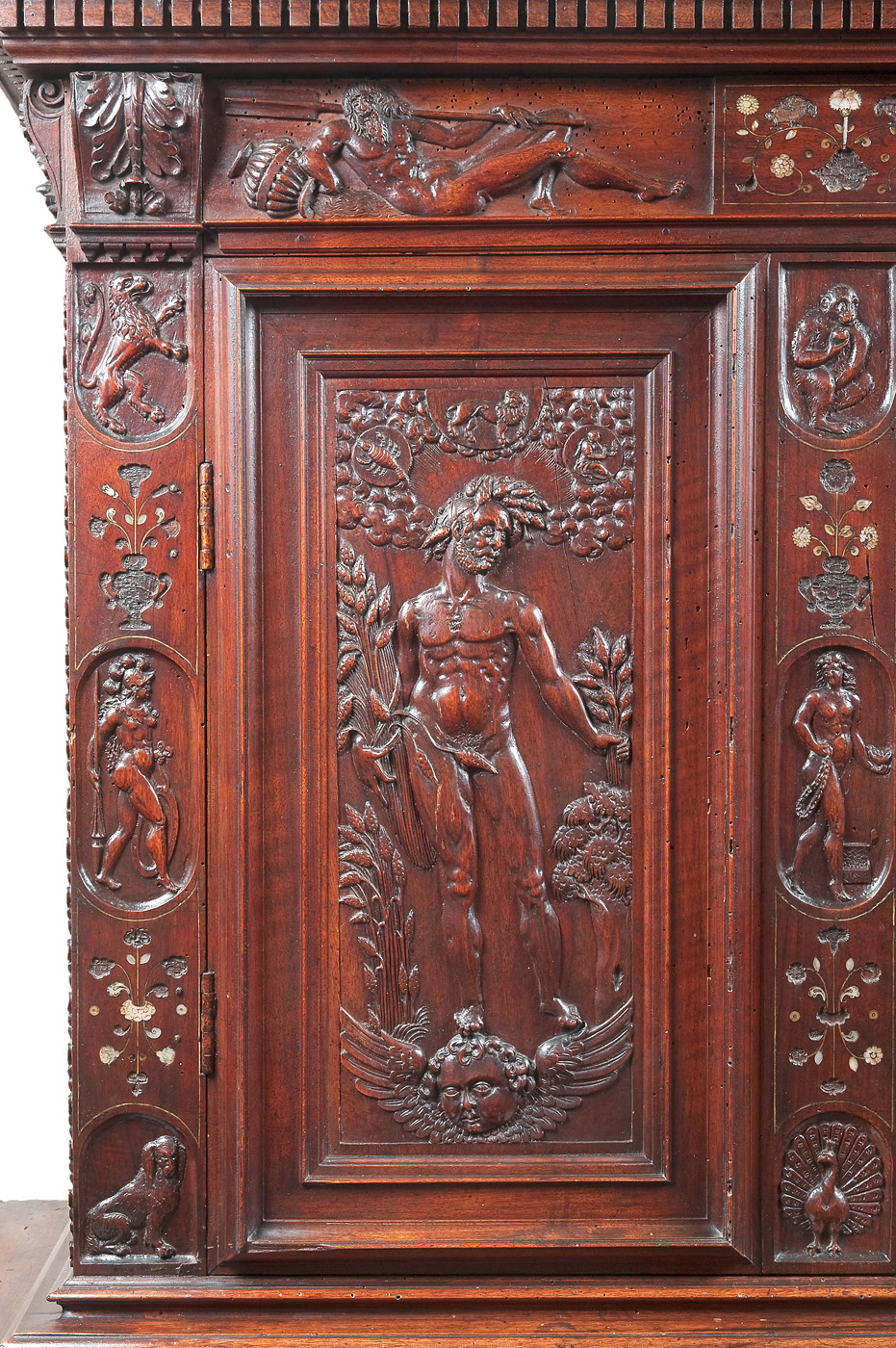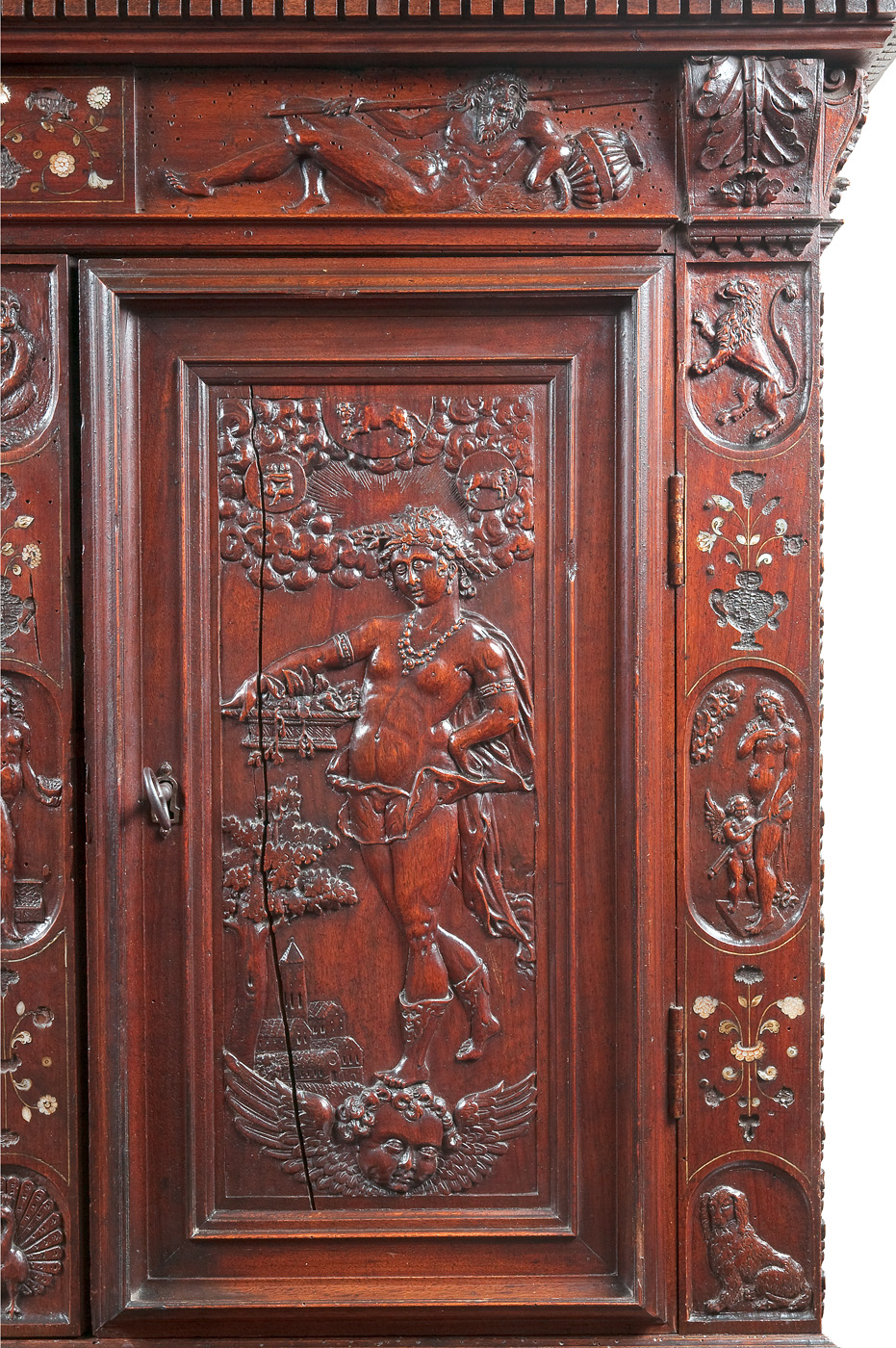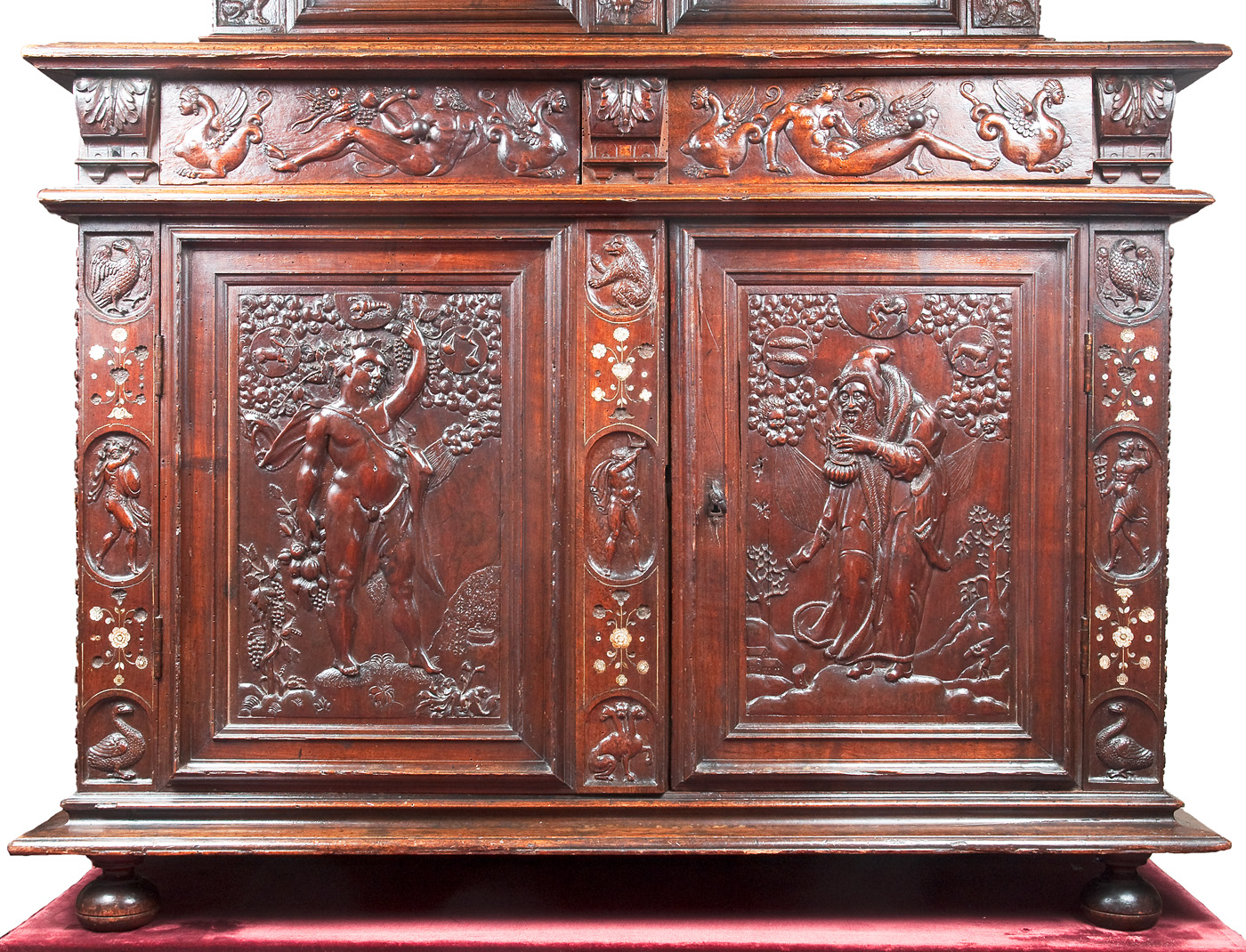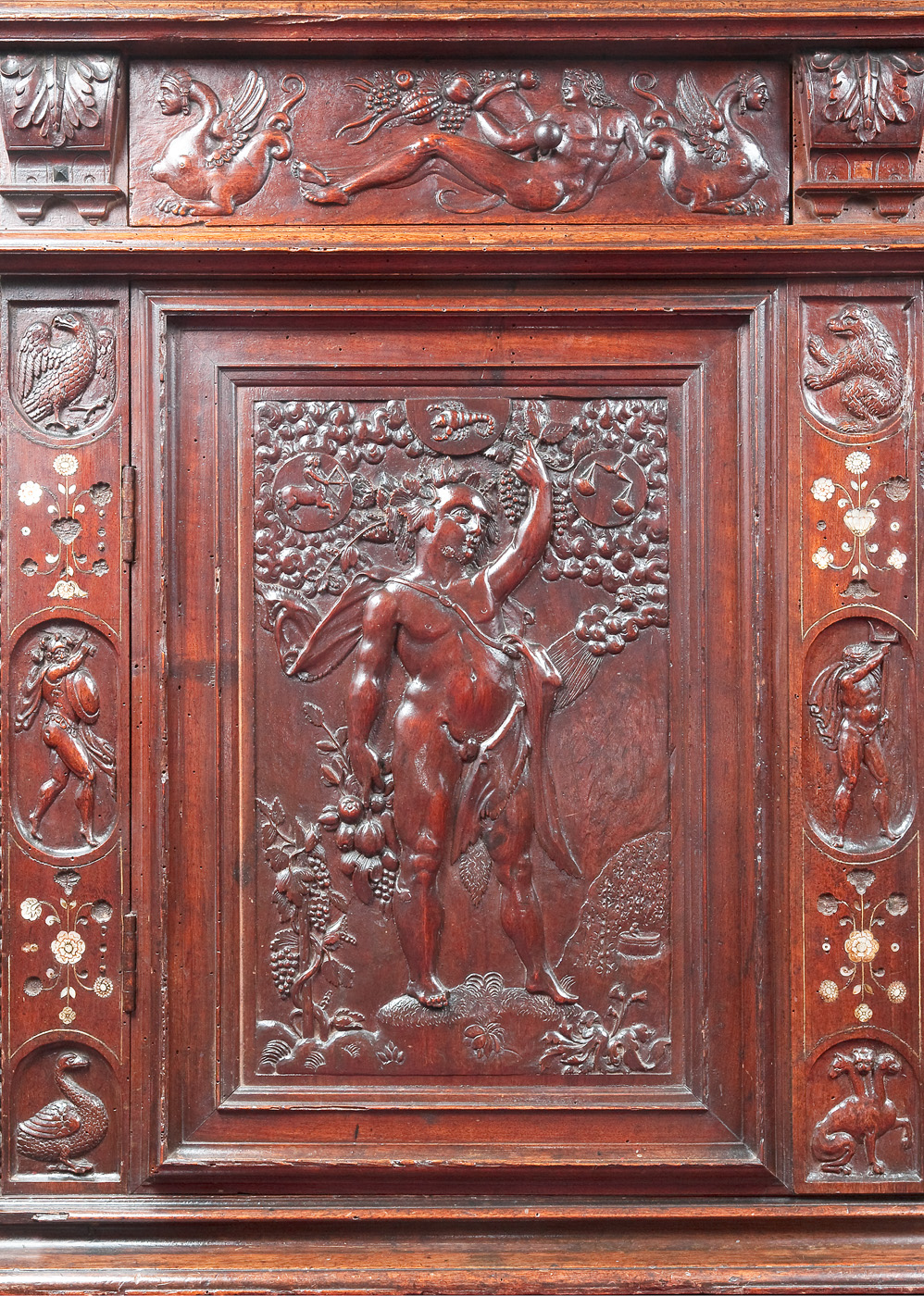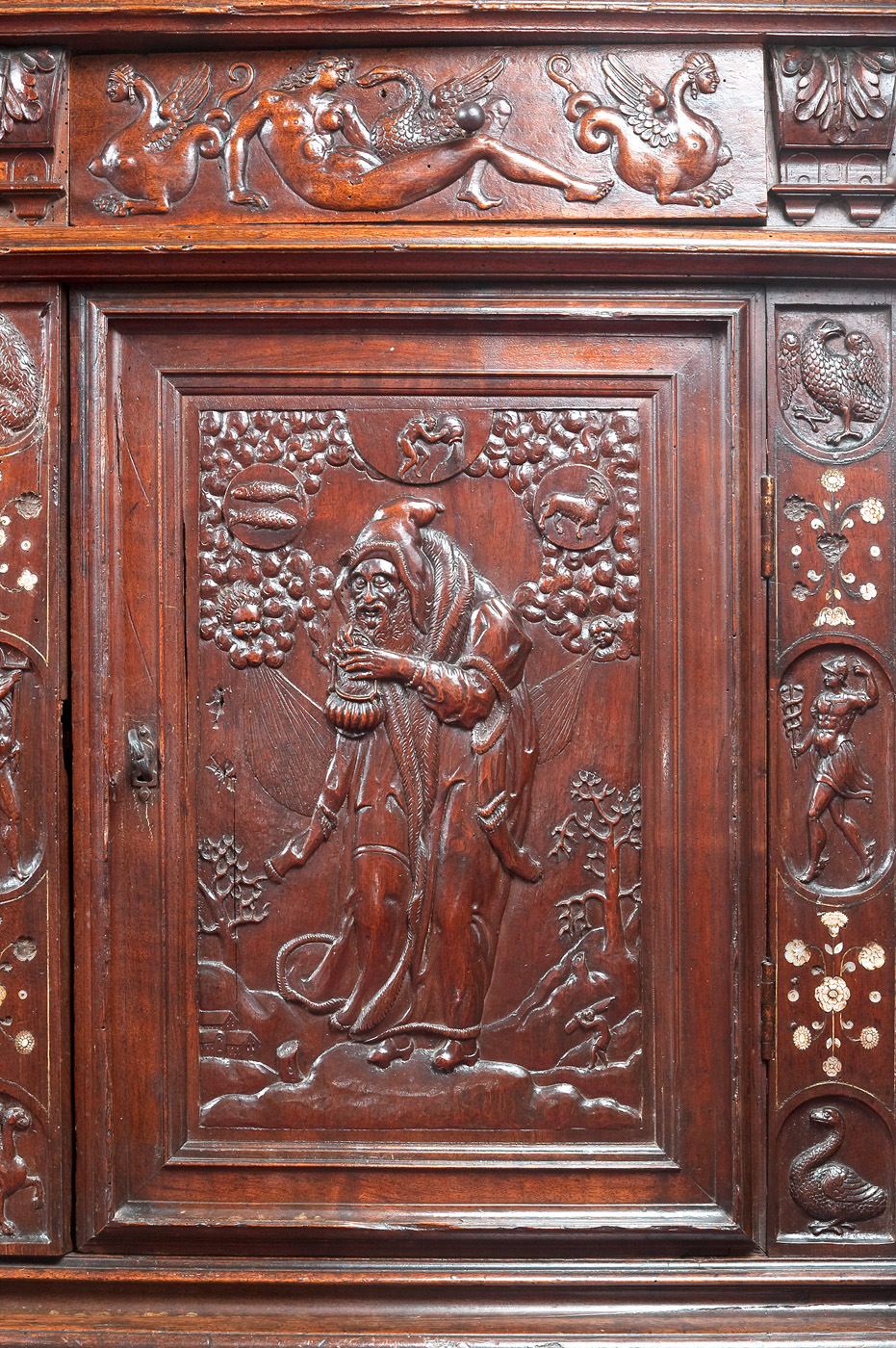Description
This rare Renaissance cabinet is richly decorated on the doors and drawers with carvings depicting the four seasons, and on the uprights and the entablature, alternating flower bouquets inlaid with mother of pearl. This is a beautifully conceived piece of furniture, representing a crowned portico with its entablature and cornice.
The upper body
Articulated separately in a ternary rhythm, as with the lower body, the upper part opens with two carved doors. The doors are framed by both the lateral uprights and the casing. There are cartouches carved into the casing in which mythological figures are depicted with flower bouquets.
On the doors :
On the right : Spring, a female figure crowned with a wreath of leaves, holding a basket full of flowers. She is wearing necklaces and bracelets on each arm, with drapery discretely wrapped around her body and is standing on a winged putti’s head. On each side are depicted a tree and a village with a steepled church. Above her head float the three signs of the zodiac corresponding to the season: Aries, Taurus and Gemini.
On the left : Summer, a bearded man crowned with ears of corn and bearing armfuls of corn. He is standing on a similar winged putti, flanked by a tree and an ear of corn. The following three signs of the zodiac appear: Cancer, Leo and Virgo.
On the uprights and the central casing a number of smaller figures seem to represent virtues and vices that newly wedded couples should aspire to or avoid.
On each side, at the bottom of the uprights, there is a dog representing fidelity. Above, a lion embodies power, wisdom and justice.
In between, on the left upright, there is a figure of noncombatant Athena wearing a helmet and holding a spear, an arrow pointing down and in her left hand, a shield, symbol of protective power. On the right upright, the goddess Venus controls the arrow of Cupid.
The iconography here acts as a clear reminder of the required virtues that both parts of a young couple need to fulfill: fidelity, power, wisdom and justice. For him, the goddess Athena focuses on the power. Whereas for her, it is Venus who shows how to control Cupid’s arrow.
On the central casing at the bottom, by way of contrast, there is a peacock, a symbol of pride and at the top, a monkey representing lust and mischief. In between, a woman holding a chain and a cup full of precious stones in her hands, while on the floor sits a half empty opened casket, can be interpreted as a symbol of extravagance.
Above, the entablature, decorated with male figures resting on leaking urns, may symbolize the passing of time. They are flanked by two consoles decorated with acanthus leaves and separated by flower bouquets (inlaid with mother of pearl). Finally on top, a cornice acts as a crown for the piece of furniture.
The lower body
The moulded base stands on four round, flattened feet.
Represented on the doors :
On the left : Autumn, a stocky, naked man crowned with vine leaves, holding fruits in his right hand and with his left, picking a bunch of grapes from a climbing vine. Standing on a mound, he is surrounded by a vine and a hill, at the foot of which a man presses the grapes in a big vat after the harvest. Above the climbing vine appear the signs of Libra, Scorpio and Sagittarius.
On the right : Winter, an elderly man wearing a fur cloak and a pointed hat, is warming up his hands by holding a blazing vessel. On each side stand a bare tree and some houses. Above, heavy clouds form the heads of two putti who are blowing, referring to the winter wind. Floating in the clouds are the signs of the zodiac: Capricorn, Aquarius and Pisces.
The left and right uprights show on the bottom, a goose, another symbol of conjugal fidelity and watchfulness. Above, an eagle is depicted, perhaps symbol of birds being of superior spiritual state and the primitive figures of paternity.
On the uprights, the figures differ from one side to the other.
On the left upright stands a figure of a fighting Mars waving his spear.
On the right upright, a figure of Mercury god of prosperity, with winged feet, holding in his hand the caduceus, symbol of the balance between opposite forces. That is all for the virtues.
On the central casing, at the bottom, is a three headed hydra, image of all vices.
Above, a naked man with his pitchfork pointing to the sky that could be Pluto.
Finally, at the top, is shown a bear, traditionally used as the emblem of cruelty, wildness and brutality.
All the symbols represented on this piece of furniture suggest that the object may have been received as a wedding gift.
The richness of the symbols, the iconography and the carving, being firm and robust, and the use of inlaid mother of pearl for the creation of vases and flowers, make this piece of furniture a rare embellished.

